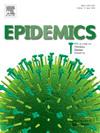使用序数机器学习方法预测英格兰地区COVID-19住院率。
IF 2.4
3区 医学
Q2 INFECTIOUS DISEASES
引用次数: 0
摘要
背景:2019冠状病毒病大流行给医疗保健带来了巨大压力,许多系统需要为多重重叠感染浪潮造成的需求激增做好准备并减轻其后果。因此,公共卫生机构和卫生系统管理人员也受益于呼吸道感染的短期预测,使他们能够管理服务。虽然定量预测将住院人数视为连续变量,但许多健康管理人员更喜欢离散的需求水平,类似于天气和洪水中使用的方法。然而,产生精确的次国家级预测的有效工具仍然有限。方法:我们使用2020年3月至2021年12月的数据对英格兰地区COVID-19住院率进行预测,并使用2022年1月至12月的数据对预测进行培训和评估。我们使用n-tile和n-uniform方法将区域准入计数转换为有序变量。我们进一步开发了一种基于XGBoost(以前用于流感)的方法,使其能够利用普通医院住院水平的排序信息。我们将不同类型的数据纳入预测指标:流行病学数据,包括每周地区COVID-19病例和住院人数、天气条件和多个类别地点的流动性数据。同时考虑了不同离散化方法和序数的影响。结果:我们发现,与仅依赖流行病学数据和包含天气数据相比,流动性数据在预测性能方面带来了更大的改善。当在流行病学数据之外同时使用天气和机动性数据时,其结果与仅使用流行病学数据和机动性数据的模型非常相似。就为预测目标选择的水平数量而言,这些结果是稳健的。结论:使用XGBoost和流动性数据获得了准确的COVID-19住院率序数预测。虽然均匀序数级别显示出更高的明显准确性,但我们推荐包含更丰富信息的n块序数级别。本文章由计算机程序翻译,如有差异,请以英文原文为准。
Forecasting regional COVID-19 hospitalisation in England using ordinal machine learning method
Background
The COVID-19 pandemic caused substantial pressure on healthcare, with many systems needing to prepare for and mitigate the consequences of surges in demand caused by multiple overlapping waves of infections. Therefore, public health agencies and health system managers also benefitted from short-term forecasts for respiratory infections that allowed them to manage services. While quantitative forecasts treating hospital admissions as continuous variables existed, many health managers prefer discrete levels of demand, similar to approaches used in weather and flooding. However, effective tools for generating precise sub-national forecasts remained limited.
Methods
We forecast regional COVID-19 hospitalisations in England, using the period from March 2020 to December 2021 for training and evaluating predictions using data from January to December 2022. We transform regional admission counts into an ordinal variable using n-tile and n-uniform methods. We further developed a method based on XGBoost, and used previously for influenza, to enable it to exploit the ordering information in ordinal hospital admission levels. We incorporated different types of data as predictors: epidemiological data including weekly region COVID-19 cases and hospital admissions, weather conditions and mobility data for multiple categories of locations. The impact of different discretisation methods and the number of ordinal levels was also considered.
Results
We found that mobility data brings about a more substantial improvement in predictive performance than relying only on epidemiological data and the inclusion of weather data. When both weather and mobility data are used in addition to epidemiological data, the results are very similar to models with only epidemiological data and mobility data. These results are robust in terms of the number of levels chosen for the forecast target.
Conclusion
Accurate ordinal forecasts of COVID-19 hospitalisations were obtained using XGBoost and mobility data. While uniform ordinal levels showed higher apparent accuracy, we recommend n-tile ordinal levels which contain far richer information.
求助全文
通过发布文献求助,成功后即可免费获取论文全文。
去求助
来源期刊

Epidemics
INFECTIOUS DISEASES-
CiteScore
6.00
自引率
7.90%
发文量
92
审稿时长
140 days
期刊介绍:
Epidemics publishes papers on infectious disease dynamics in the broadest sense. Its scope covers both within-host dynamics of infectious agents and dynamics at the population level, particularly the interaction between the two. Areas of emphasis include: spread, transmission, persistence, implications and population dynamics of infectious diseases; population and public health as well as policy aspects of control and prevention; dynamics at the individual level; interaction with the environment, ecology and evolution of infectious diseases, as well as population genetics of infectious agents.
 求助内容:
求助内容: 应助结果提醒方式:
应助结果提醒方式:


